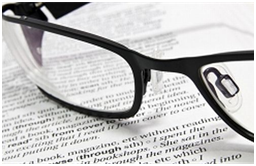
Lesson 6: How to Copyedit
Objectives:
- To enumerate different techniques used in copyediting
- To explain the different techniques mentioned throughout the lesson
Quick Navigation through the Lesson 6:
 In this lesson, we’ll be discussing different techniques to help you become a great copyeditor. And just like proofreading, we’re going to be taking an in-depth look into these tips and tricks and showing you exactly how you can employ these different techniques in your copyediting endeavors. These are outlined below:
In this lesson, we’ll be discussing different techniques to help you become a great copyeditor. And just like proofreading, we’re going to be taking an in-depth look into these tips and tricks and showing you exactly how you can employ these different techniques in your copyediting endeavors. These are outlined below:
Don’t Rush
It’s best to come up with a realistic calendar or schedule—make sure that you don’t rush and that you’re able to read the work thoroughly so that you can edit the work to the best of your abilities. Having said this, it’s also important to coordinate with the other people involved in the project such as the writer and/or the publisher so that you’re able to sync your schedules, thus allowing you to go through the text thoroughly.
Consider the Reader
As the copyeditor, you’ll have more control over the project than the proofreader. Should they neglect to make comments which consider who you’re writing for, this is your responsibility. Since you know the context of the project, you can make comments and suggestions based on the project in general: which parts work and which parts don’t? Which parts will be helpful to your audience? Which ones are unnecessary or confusing?
Consider the Format
Formats might seem overly technical but they’re also very important. For example, when applying for grants or bids or when entering contests, this can make the difference between winning a prize and getting disqualified. Also, in the world of publishing it’s very difficult to undo an error: thousands of copies are typically produced at a time, making it almost impossible to correct your mistakes, should you accidentally leave out a page number or leave a paragraph unevenly spaced. Furthermore, in the case of stories or poetry, little things like this can affect how the entire work is read by the reader.
Eliminate Doubts
If the work you’re editing is supposed to be informative or narrative, then you need to eliminate any doubts which you have about the paper. This is not to say that it shouldn’t evoke certain emotions or questions about the broader topic but that what the work says about the topic should be clear. What is the writer’s stand? What is this sentence saying? Is it telling a story? Advertising? These things should be clarified and ironed out before you finalize the work.
Note Your Progress
Keep a chart or a daily log sheet where you can write down the progress you’ve made—what sections were you able to work on? How much further do you have to go? This can also work as a reminder to keep in touch with the other people in the project: what developments have occurred? What updates do you need to inform them about? This helps you stay on top of the project—making sure that you’re never late and that your work is always top quality.
[WpProQuiz 217]
In this lesson, we were able to tackle a few tips and trick s that can help you become the best copyeditor that you can be. Discussing and following these techniques allows you to do a great job and to stay on schedule.
Try Our Exercise And and Prep Yourself for the Real Thing
Next up we’ll be discussing how to proofread your own work: now that we’ve covered the things that we need to do to be able to become great copyeditors and proofreaders when tackling the work of others, how do we increase the growth of our own personal writing? Keep reading to find out!
 + 1-888-827-0150
+ 1-888-827-0150 + 44-20-3006-2750
+ 44-20-3006-2750










